Curious about caves and mines in Europe? Here are 16 different underground sites we've visited ourselves. You'll find everything from beautiful cave rooms with impressive stalactites to interesting mines where silver, salt, iron, coal, copper and cobalt have been mined...
Table of contents
Caves and mines in Europe
There are lots of exciting caves and mines in Europe. Caves are natural and can offer imaginative surprises. Mines, on the other hand, tell the human story of toil, hard work and - in some cases - wealth. Both caves and mines share the common denominator of being found underground.
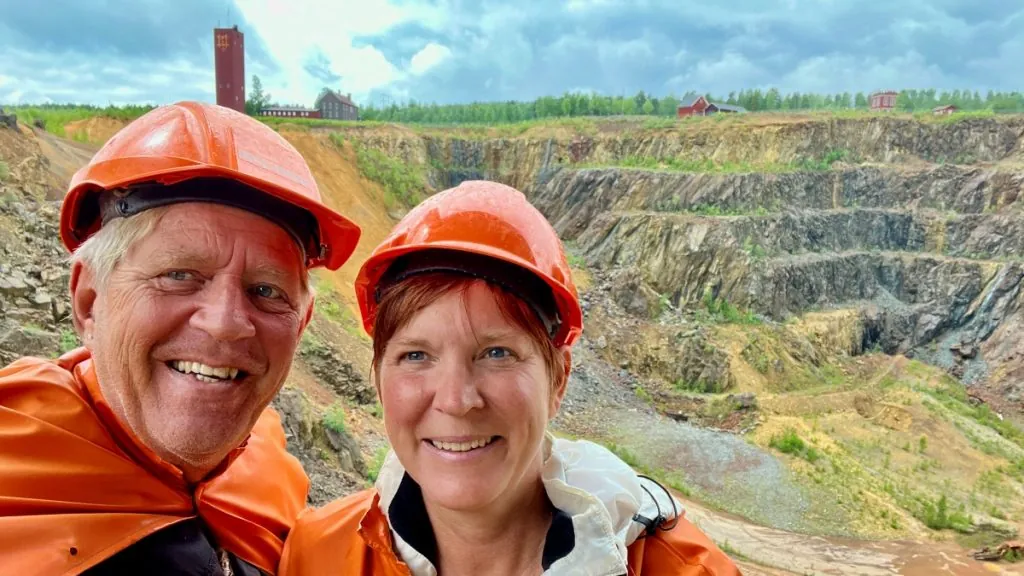
Caves in Europe
We start with a number of caves in Europe, before moving on to mines.
1. Postojna, Slovenia
Postojna Cave is a 21 kilometre long cave system in Postojna, Slovenia. The cave system originated as a karst formation and is the second longest cave in Slovenia. Today, the cave is a major tourist attraction and can be experienced by travelling on a tourist train past all the stalactites and stalagmites.
- Was: Postojna, Slovenia
- Length: Approximately 24.3 kilometres
- Read more: Postojna cave in Slovenia
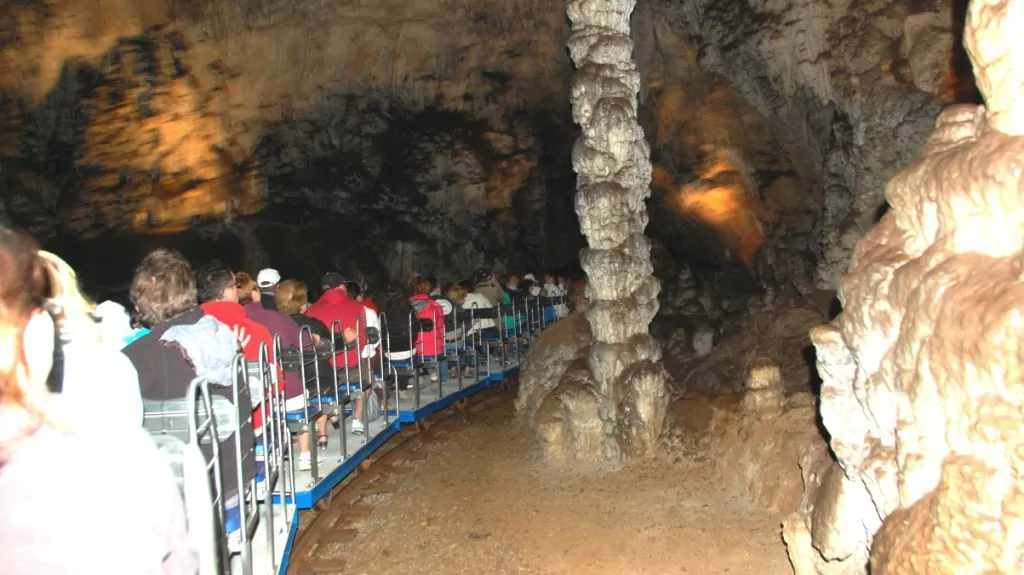
2. Kalkberghöhle in Bad Segeberg, Germany
The Kalkberghöhle cave is located in Bad Segeberg in northern Germany. The cave is 2285 metres long and is home to around 30,000 bats of seven different species in winter. Guided tours are available in summer, and there is also a museum where you can learn more about bats.
- Was: Bad Segeberg, Germany
- Length: Approximately 2 kilometres
- Read more: Bat cave in Bad Segeberg
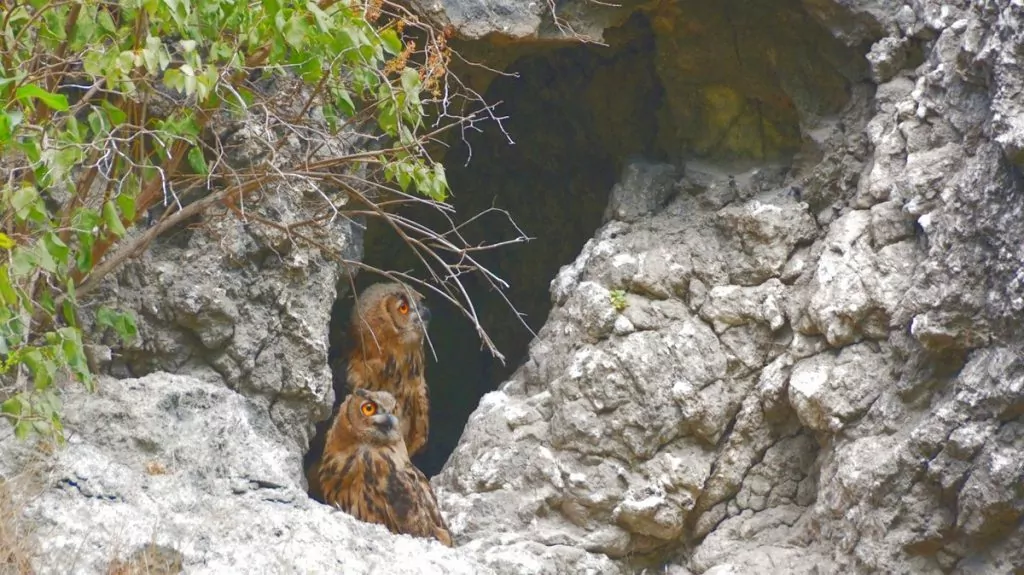
3. Punkva Caves, Czech Republic
Punkva Caves are located in Blansko, just north of Brno in the Czech Republic. These large caves are filled with stalagtites, stalagmites and fascinating rock formations. What makes this cave unique is a green grassy area in the centre of the cave, as well as a boat ride on an underground river.
- Was: Blansko, north of Brno, Czech Republic
- Length: Approximately 4 kilometres
- Read more: Punkva Caves in the Czech Republic
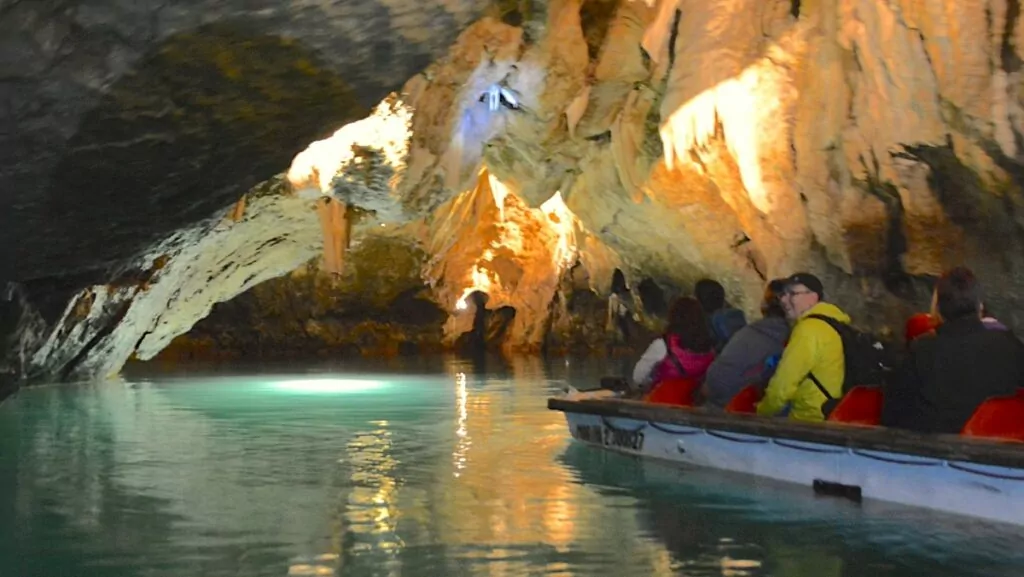
4. Szemlö-Hegy in Budapest, Hungary
The Szemlö-Hegy cave was discovered in the 1930s by a couple of adventurous men and the girlfriend of one of them, who refused to accept the end of the cave and scrambled onwards. Today there is a larger opening for visitors. The neighbouring cave, Pál-Völgyi, offers adventure caving.
- Was: Budapest, Hungary
- Length: Approximately 2 kilometres
- Read more: Caves in Budapest
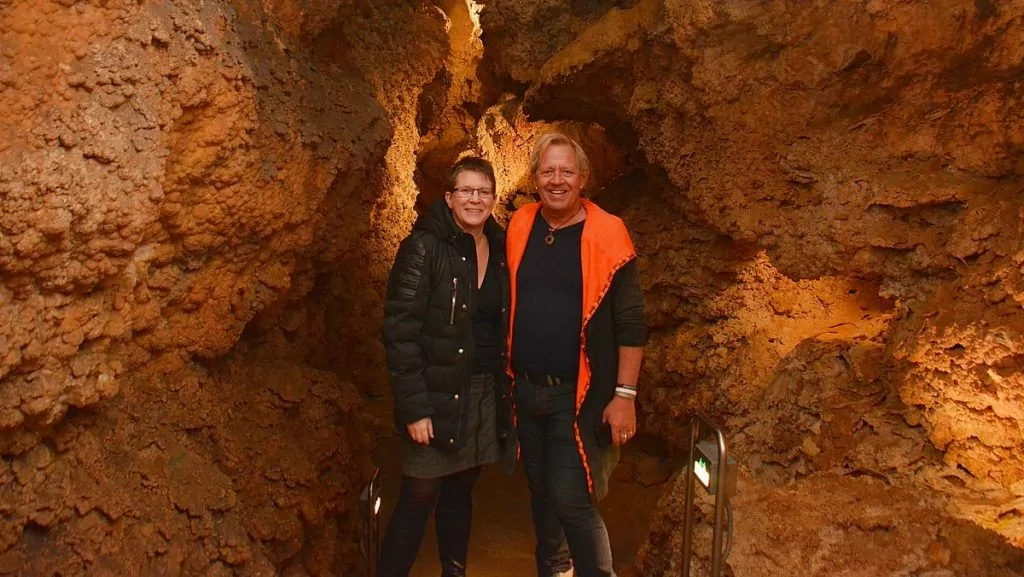
5. ice cave Eisriesenwelt, Austria
Eisriesenwelt, located near Salzburg in Austria, is the largest ice cave in the world. This gorgeous cave is a very popular destination. You can get to the cave by first travelling by cable car, and then hiking a further distance.
- Was: Tennengebirge, outside Salzburg, Austria
- Length: Approximately 42 kilometres
- Read more: Eisriesenwelt in Austria
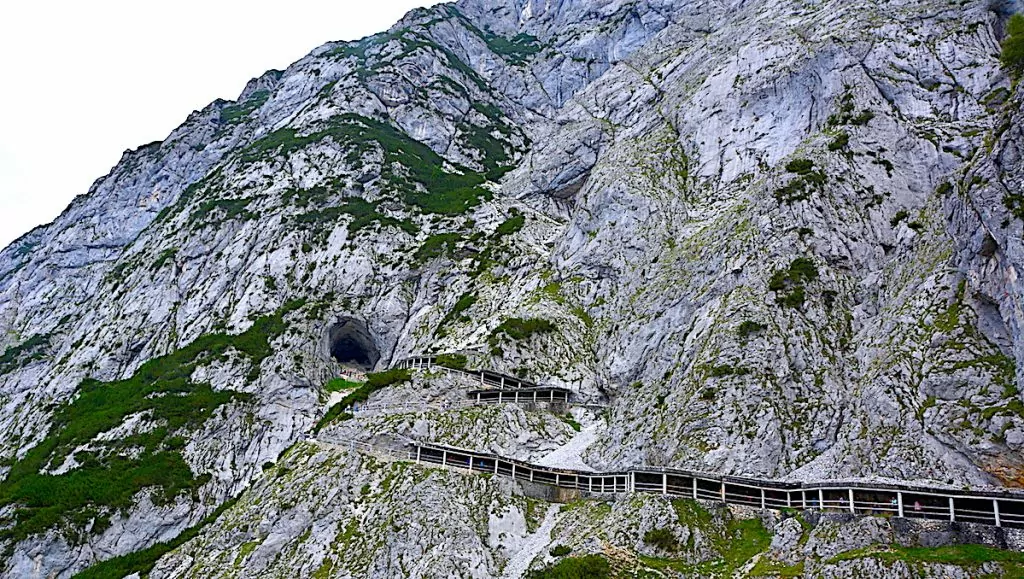
6th Aillwee Cave, Ireland
Located on the west coast of Ireland, Aillwee Cave was found by a farmer in 1944, while searching for his lost dog. It was only 30 years later that he told us about the cave, which is now a popular attraction. The cave was formed by an underground river, and therefore has the shape of a tunnel with a rounded roof.
- Was: South of Galway, Ireland
- Length: Approximately 1 kilometre
- Read more: Two caves in Ireland

7. Doolin Cave, Ireland
Doolin Cave, located just outside Doolin on the west coast of Ireland. This cave was discovered in 1952 by two cave climbers who stubbornly pushed their way through dense darkness. Eventually they reached a large chamber containing the largest stalactite in Europe, measuring 7.3 metres long and weighing around 10 tonnes.
- Was: Outside Doolin, Ireland
- Length: Approximately 6.7 kilometres
- Read more: Two caves in Ireland

8. Neptune Cave, Sardinia
Grotta di Nettuno, Neptune's Cave, is a cave located by the sea near the town of Alghero in Sardinia. Discovered by local fishermen in the 19th century, today it is a popular destination that can be reached via various boat excursions.
- Was: Outside Alghero, Sardinia, Italy
- Length: Approximately 4 kilometres
- Read more: Neptune Cave in Sardinia
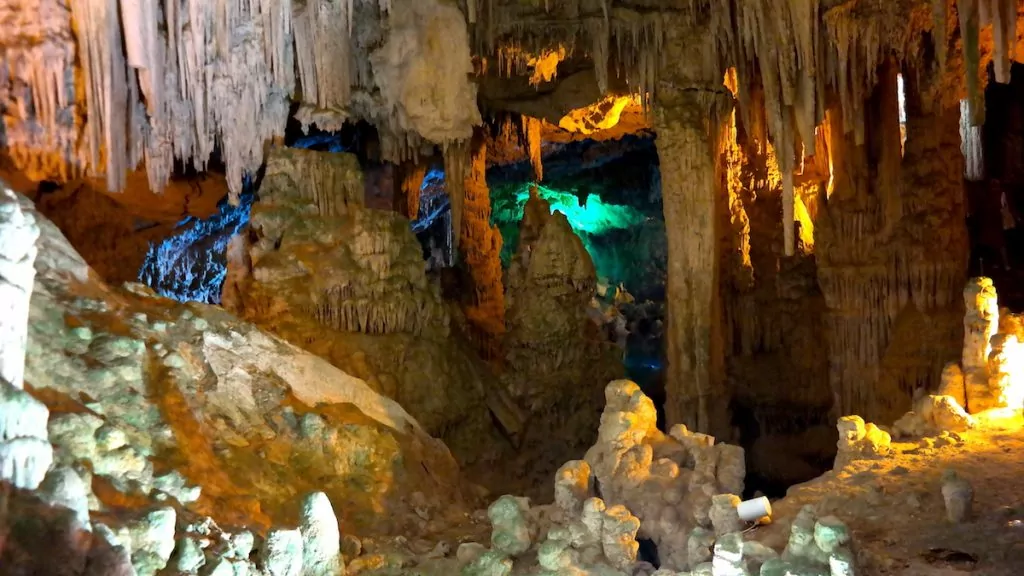
9. Grotte de la Madeleine, France
The French region of Ardeche is full of caves, some of which are open to tourists. We visited the Grotte de la Madeleine, which is full of large stalagtites and stalagmites. Nearby is the Chauvet cave and a replica of it, where you can see cave paintings made 36,000 years ago.
- Was: Ardeche, France
- Length: Approximately 500 metres
- Read more: Ardeche in France
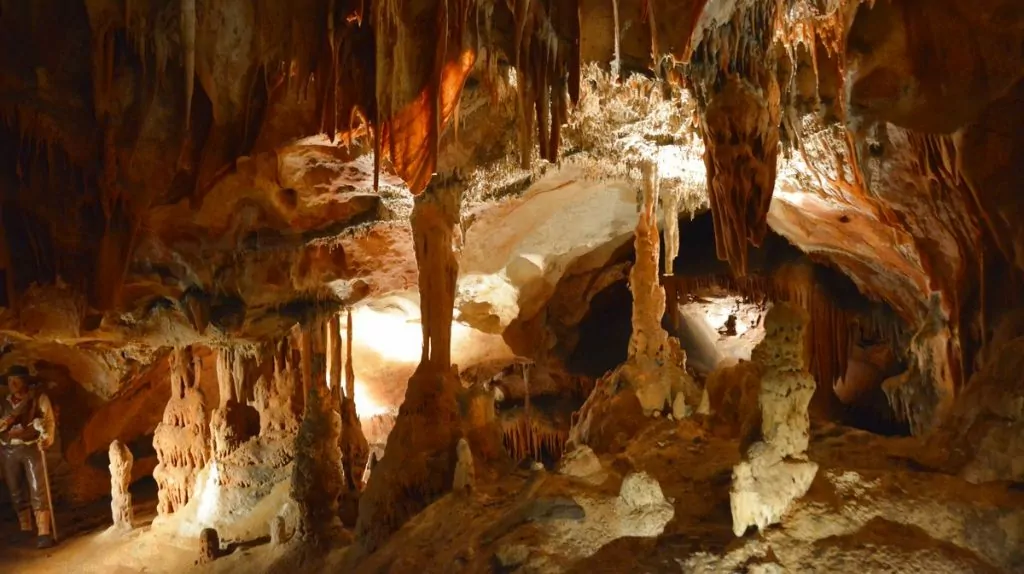
Mines in Europe
Now we're moving on to more underground spaces, in the form of mines in Europe.
10. Sala silver mine, Sweden
The Sala silver mine was in operation between the 15th and early 20th centuries, and is today a major tourist destination. Visitors can take a tour of the mine, where dedicated guides tell visitors about the lives of miners in the past.
- Was: Sala, Sweden
- Type of mine: Silver
- Active: From the 15th century to 1908
- Read more: Sala Silver Mine
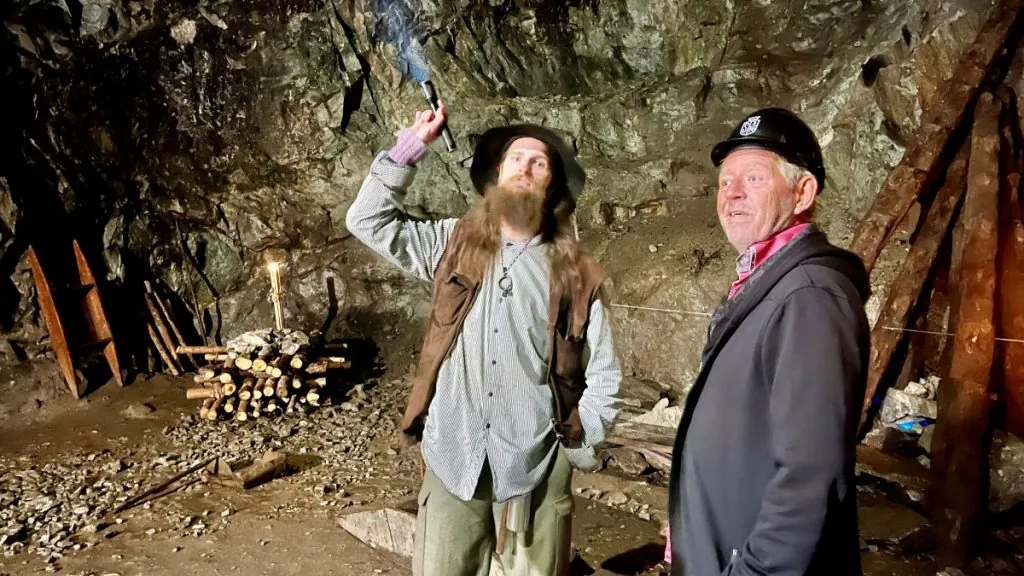
11. Falu Gruva, Sweden
Falu mine is a historic copper mine, and today also a UNESCO World Heritage Site. You can join guided tours down into the mine and there are also several above-ground attractions, in the form of museums and homes that show how miners once lived.
- Was: Falun, Sweden
- Type of mine: Copper
- Active: From around the 7th century until 1992
- Read more: Falu Gruva in Falun

12. Rammelsberg mine, Germany
The Rammelsberg mine is a UNESCO World Heritage Site in the German town of Goslar, in the Harz mountains. The mine is a World Heritage Site because it has a lot to tell about mining in Europe, during the Middle Ages and the Renaissance. Today, guided tours are available and there is also a museum.
- Was: Goslar, Germany
- Type of mine: Metals
- Active: Until 1988
- Read more: The mine in Rammelsberg
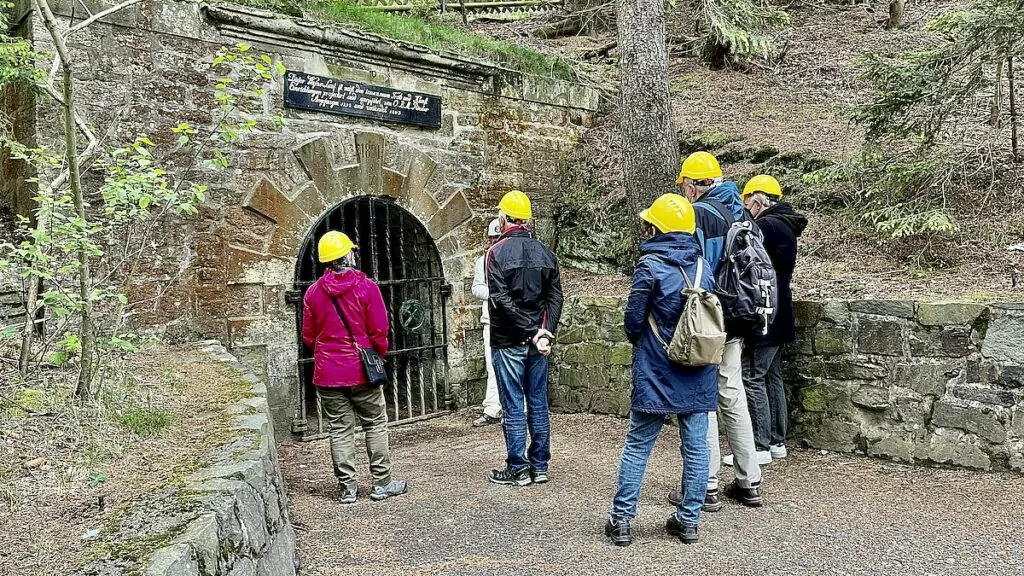
13. Landek Park, Czech Republic
Landek Park is an interesting mining museum in the town of Ostrava in the eastern Czech Republic, where coal used to be mined. Today it is a museum, and you can equip yourself with helmets and go underground. Above ground, there are various exhibits, including rescue equipment.
- Was: Ostrava, Czech Republic
- Type of mine: Coal
- Active: 1782-1990
- Read more: Landek Park Mining Museum
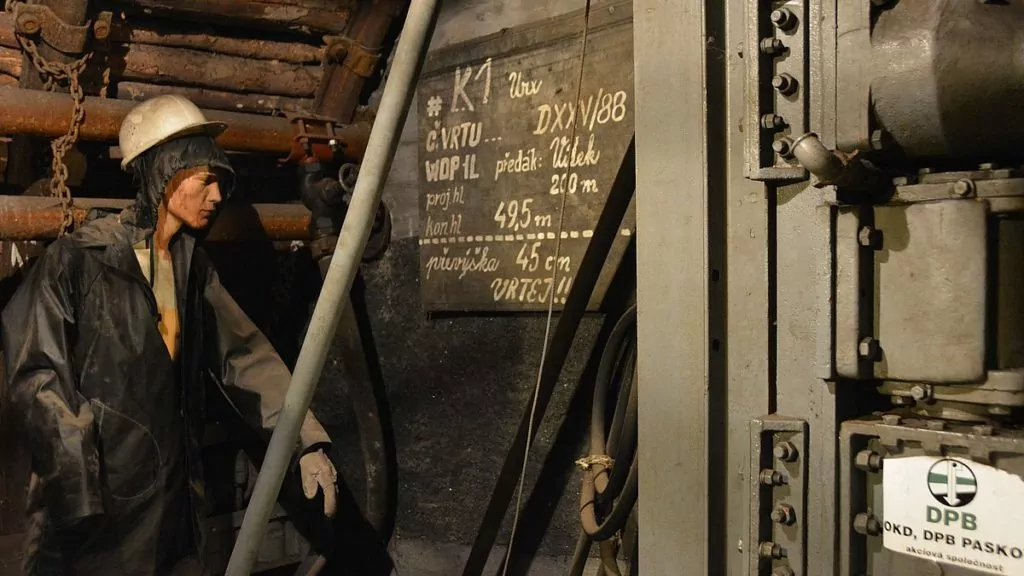
14. Loos cobalt mine, Sweden
The Loos cobalt mine is located in Los in Hälsingland and was in operation during the 18th century. The mine mined ore with cobalt, which was used to produce a sought-after blue colour, which was then used to decorate porcelain. Today, you can take a guided tour or explore the museum.
- Was: Los (Hälsingland), Sweden
- Type of mine: Cobalt
- Active: 1730-1773
- Read more: Things to do in Ljusdal

15. Salt mine in Wieliczka, Poland
The Wieliczka Salt Mine is located outside Kraków in southern Poland, just below the town of Wieliczka. The mine was in operation from the 13th century until 1996 and is now a UNESCO World Heritage Site and a very popular tourist destination, with over a million visitors a year.
- Was: Wieliczka, outside Krakow, Poland
- Type of mine: Salt
- Active: Until 1996
- Read more: The salt mine in Wieliczka
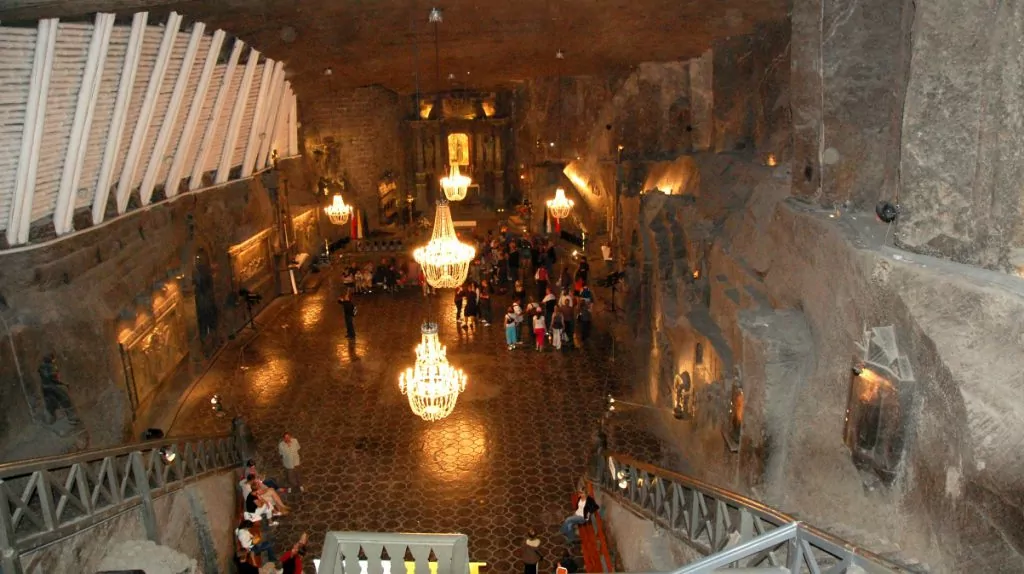
16. Kiruna Mine, Sweden
The Kiruna mine is an iron ore mine in the Kiirunavaara mountain in Kiruna, in northern Sweden. LKAB has been mining iron ore here since the early 1900s and the mine is today the world's most modern underground iron ore mine. Through LKAB's visitor centre you can join guided tours. I (Helena) visited the mine many, many years ago, which was very interesting.
- Was: Kiruna, Sweden
- Type of mine: Iron ore
- Active: 1892 - ongoing

Which caves and mines in Europe have you visited?
Which caves and mines in Europe have you visited? Have you visited any in the list above? Which ones made a lasting impression?


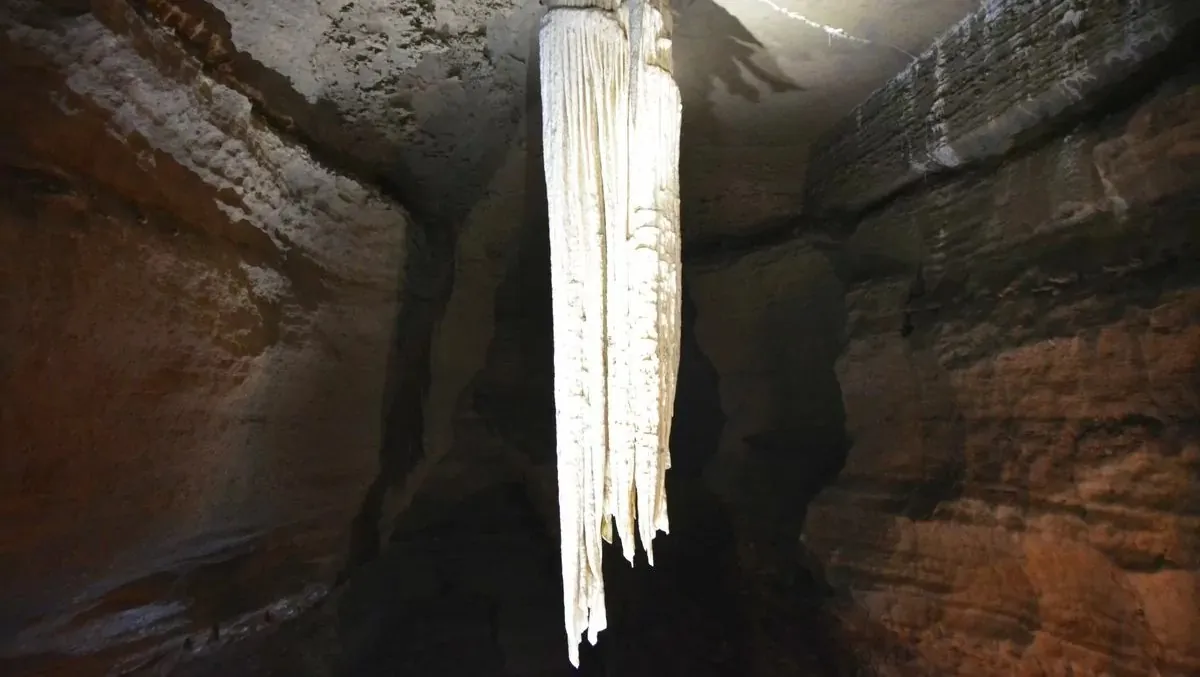







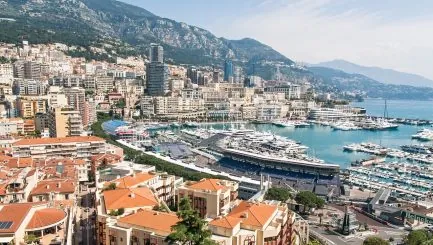


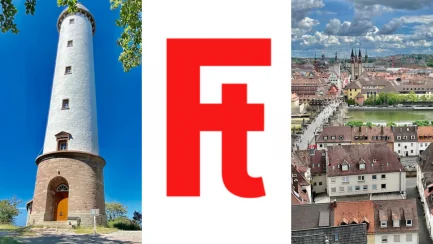
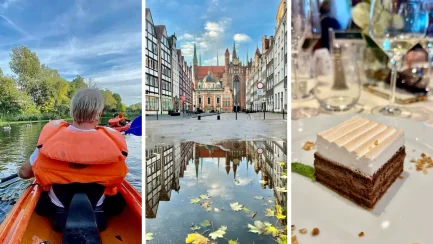



Netti Starby says:
So many mines and caves there are in the world and I have never visited a mine. Hugs <3
11 February 2025 - 6:23
Helena says:
There are a whole bunch of interesting underground places! 🙂
12 February 2025 - 19:46
Aberaber says:
The salt mine in Poland, my fellow traveller with asthma could breathe so easily down there. The salt did something to the air. I remember there was a chapel or a church down there. And that the lift ride down was unpleasant. vEven visited a cave system in Belgium towards the French border, can't remember what it was called. Actually, I don't like mines and caves so maybe I wouldn't take a detour to them.
11 February 2025 - 10:00
Helena says:
The salt mine in Poland was a special experience, agree! Fascinating that it was also good for the breathing of your asthmatic fellow traveller!!!
12 February 2025 - 19:47
Hanneles book paradise says:
not visited so many, count Fröå mine in Åre.
11 February 2025 - 10:07
Helena says:
I think we are counting on it! But I have not heard of it, thanks for the tip! 🙂
12 February 2025 - 19:48
snort says:
Mines are not really my thing but I have visited one in Spain and one in Turkey. Interesting visits.
11 February 2025 - 12:48
Helena says:
I'm glad you got some of them, even though it's not really your thing!
12 February 2025 - 19:48
BP says:
I must admit that I have not visited a single one of your caves. I have only visited three caves in my life - Cuevas del Drach, Mallorca; Gorges du Tarn, France and Lummelunda Cave on Gotland. The cave that was most impressive was Gorges du Tarn. I remember mentioning it when you were in the neighbourhood and visited Gorges du Verdon. However, may remember wrong - you know that with selective memory; -)
11 February 2025 - 18:05
Helena says:
You, on the other hand, have visited a whole bunch of others! We missed Gorges du Tarn that time ... but we might get another opportunity this year! 🙂
12 February 2025 - 19:49
bmlarstravellingblog says:
Caves are not really our thing but we have visited Postojna Caves and Swedish Lummelunda. Mines are a bit interesting and the ones on your list that we have visited are Sala, Falun, Kiruna and Loos. Then Lars has been to the Polish salt mine and our German friends took us on a guided tour of a lead mine, south of Cologne. Now it almost feels like enough with both mines and caves...
11 February 2025 - 19:12
Helena says:
You have got a whole bunch it feels like, so I can understand if you feel happy! 🙂
12 February 2025 - 19:50
Amanda (Swedish Passport) says:
Have completely missed several of these mines so many thanks for the tips! Visited the salt mine in Wieliczka a couple of years ago and was so fascinated - especially by the crystal chandeliers of salt 🙂
11 February 2025 - 20:07
Helena says:
The Polish salt mine is one of the ones that stands out the most, fascinating, so glad you found it!
12 February 2025 - 19:51
Hanna's crib says:
I think it is so interesting with caves and mines. Would love to go to Sala silver mine sometime. There are many cool places to see. One mine that disappointed me was Lummelunda Cave on Gotland. If you want to get something out of that cave, you should do the cave adventure. I do not think that the actual viewing cave is so much fun.
12 February 2025 - 8:25
Helena says:
The Sala silver mine is definitely worth a visit! (Even if you can't get as deep as before, when they had a lift). Thanks for the input about the Lummelunda cave!
12 February 2025 - 19:52
Mr Michael says:
Such destinations could appeal to me, always liked caves to walk around in, but I have never visited a mine... exciting.
Have a good time now. 🙂
12 February 2025 - 17:25
Helena says:
Mines and caves are exciting! Thank you all the same!
12 February 2025 - 19:54
Tove says:
Now I've been caving and enjoying fantastic cave formations in your beautiful post here!
I have been down one mine and it was in Spain 40 years ago. Can't remember the name. But I will never forget the experience!
15 February 2025 - 18:47
Sture Sandström says:
Having visited the mine in Slovenia several times, there is always something new to discover there.
But also the salt mine in Hallein in Austria a little outside Saltzburg, it was used during WW2 as an escape route from the Nazis in Germany to get to Austria.
17 February 2025 - 11:13
Danielle says:
The caves in Nerja, Andalusia are very spectacular. We had the luxury of being the first visitors in the morning and we were very taken.
17 February 2025 - 12:41